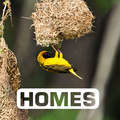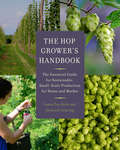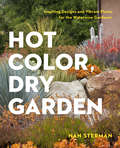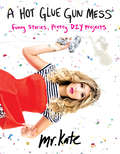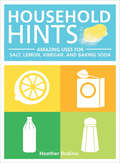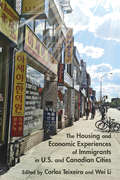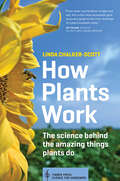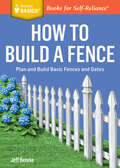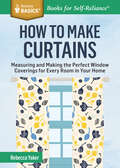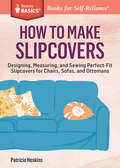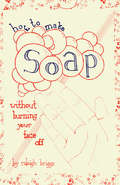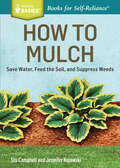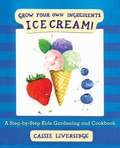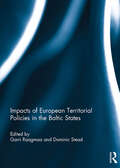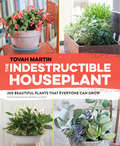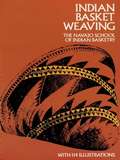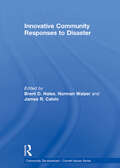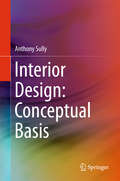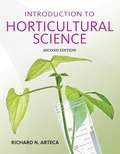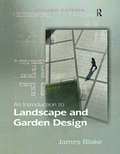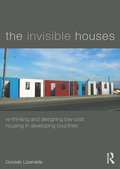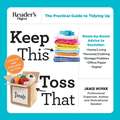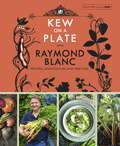- Table View
- List View
Homes (Picture This)
by Judith NouvionHomes are everywhere in nature. Discover many different kinds in these eye-catching photographs of animals in their natural habitats. From the silk thread spun by the weaver ant to the snowy den dug out by the polar bear, children will learn about where animals live and how they build or find their dwellings in our natural world. Perfect for very new and curious learners!
The Hop Grower's Handbook: The Essential Guide for Sustainable, Small-Scale Production for Home and Market
by Laura Ten Eyck Dietrich GehringWith information on siting, planting, tending, harvesting, processing, and brewing It's hard to think about beer these days without thinking about hops. The runaway craft beer market's convergence with the ever-expanding local foods movement is helping to spur a local-hops renaissance. The demand from craft brewers for local ingredients to make beer--such as hops and barley--is robust and growing. That's good news for farmers looking to diversify, but the catch is that hops have not been grown commercially in the eastern United States for nearly a century. Today, farmers from Maine to North Carolina are working hard to respond to the craft brewers' desperate call for locally grown hops. But questions arise: How best to create hop yards--virtual forests of 18-foot poles that can be expensive to build? How to select hop varieties, and plant and tend the bines, which often take up to three years to reach full production? How to best pick, process, and price them for market? And, how best to manage the fungal diseases and insects that wiped out the eastern hop industry 100 years ago, and which are thriving in the hotter and more humid states thanks to climate change? Answers to these questions can be found in The Hop Grower's Handbook--the only book on the market about raising hops sustainably, on a small scale, for the commercial craft beer market in the Northeast. Written by hop farmers and craft brewery owners Laura Ten Eyck and Dietrich Gehring, The Hop Grower's Handbook is a beautifully photographed and illustrated book that weaves the story of their Helderberg Hop Farm with the colorful history of New York and New England hop farming, relays horticultural information about the unusual hop plant and the mysterious resins it produces that give beer a distinctively bitter flavor, and includes an overview of the numerous native, heirloom, and modern varieties of hops and their purposes. The authors also provide an easy-to-understand explanation of the beer-brewing process--critical for hop growers to understand in order be able to provide the high-quality product brewers want to buy--along with recipes from a few of their favorite home and micro-brewers. The book also provides readers with detailed information on: * Selecting, preparing, and designing a hop yard site, including irrigation; * Tending to the hops, with details on best practices to manage weeds, insects, and diseases; and, * Harvesting, drying, analyzing, processing, and pricing hops for market. The overwhelming majority of books and resources devoted to hop production currently available are geared toward the Pacific Northwest's large-scale commercial growers, who use synthetic pesticides, fungicides, herbicides, and fertilizers and deal with regionally specific climate, soils, weeds, and insect populations. Ten Eyck and Gehring, however, focus on farming hops sustainably. While they relay their experience about growing in a new Northeastern climate subject to the higher temperatures and volatile cycles of drought and deluge brought about by global warming, this book will be an essential resource for home-scale and small-scale commercial hops growers in all regions.
Hot Color, Dry Garden: Inspiring Designs and Vibrant Plants for the Waterwise Gardener
by Nan Sterman“Eye-popping proof that water-wise gardens are bold, beautiful and brilliantly hued.” —San Diego Home and Garden Dry weather defines the southwest, and it's getting dryer. As water becomes more precious, our gardens suffer. If we want to keep gardening, we must revolutionize our plant choices and garden practices. Hot Color, Dry Garden provides a joyful, color-filled way to exuberantly garden in low-water conditions. Garden expert Nan Sterman highlights inspiring examples of brilliant gardens filled with water-smart plants. You'll find information about designing for color using plants, architecture, and accessories, along with a plant directory that features drought-tolerant plants that dazzle.
A Hot Glue Gun Mess
by Mr KateFrom the offbeat blogger and designer Kate Albrecht--a.k.a. Mr. Kate--comes a not-so- average DIY lifestyle book.Her love of self-expression and her desire to live an anything-but-normal life outside of the box inspired Mr. Kate to create her own unique DIY life. Her projects involve style, home design, and beauty--including DIY nail art and makeup techniques, up-cycled projects to revive tired items in your wardrobe, and stunning home-decor touches to beautify your living space. You don't have to be a seamstress, a metalsmith, or an expert at anything to enjoy these projects, all of which are doable in under two hours and require just a few easy-to-find supplies. Now you, too, can become a DIY diva!l, inspiring, and downright hilarious.Her love of self-expression inspired Mr. Kate to create her own DIY life and a social media platform to connect with young women everywhere. Her projects involve style, home design, and beauty, including DIY nail art techniques, upcycled projects for your old jeans , and watercolor curtains. You don't have to be a seamstress, metalsmith, or expert at anything to enjoy these projects, all of which are doable in under two hours and require a minimal number of supplies. Now you, too, can become a DIY diva!
Household Hints: Amazing Uses for Salt, Lemon, Vinegar, and Baking Soda
by Heather RodinoIt’s amazing what you can do with these four simple ingredients from your kitchen . . .Looking for simple, affordable, and effective home products you can count on? Trying to avoid all those harmful chemicals and find safe, natural solutions instead? Household Hints has hundreds of tips, techniques, and recipes—and many are made from the wholesome ingredients already in your kitchen: vinegar, lemon, salt, and baking soda. Inside this book you’ll learn about:cleaning solutions and scrubs * pet care * natural pest control * tips for gardens, yards, and garages * DIY beauty * food and cooking hacksThese recipes and tips for the home are organized by use for easy reference with this colorfully illustrated guide. With these ingredients you can do almost anything—the possibilities are limitless!
The Housing and Economic Experiences of Immigrants in U.S. and Canadian Cities
by Carlos Teixeira Wei LiSince the 1960s, new and more diverse waves of immigrants have changed the demographic composition and the landscapes of North American cities and their suburbs. The Housing and Economic Experiences of Immigrants in U.S. and Canadian Cities is a collection of essays examining how recent immigrants have fared in getting access to jobs and housing in urban centres across the continent.Using a variety of methodologies, contributors from both countries present original research on a range of issues connected to housing and economic experiences. They offer both a broad overview and a series of detailed case studies that highlight the experiences of particular communities. This volume demonstrates that, while the United States and Canada have much in common when it comes to urban development, there are important structural and historical differences between the immigrant experiences in these two countries.
How Plants Work: The Science Behind the Amazing Things Plants Do (Science For Gardeners Ser.)
by Linda Chalker-ScottThe more you know, the better you grow! Plants are capable of interesting and unexpected things. Why do container plants wilt when they’ve been regularly watered? Why did the hydrangea that thrived last year never bloom this year? Why do slugs wipe out the vegetable garden instead of eating the weeds? Plant physiology—the study of how living things function—can solve these and most other problems gardeners regularly encounter.In How Plants Work, horticulture expert and contributor to the popular blog The Garden Professors, Linda Chalker-Scott brings the stranger-than-fiction science of the plant world to vivid life. She uncovers the mysteries of how and why plants do the things they do, and arms the home gardener with fascinating knowledge that will change the way they garden.
How to Build a Fence: Plan and Build Basic Fences and Gates. A Storey BASICS® Title (Storey Basics)
by Jeff BenekeWhether you want to protect your garden, provide a safe enclosure for pets, or add privacy, this Storey BASICS® guide covers you everything you need to know to build the perfect fence. Offering clear step-by-step instructions, Jeff Beneke shows you how to construct a variety of fences from wood, vinyl, and chain link. With designs that are easily adaptable to all types of yards, you’ll soon be putting up a functional and beautiful fence that works with your landscape.
How to Make Curtains: Measuring and Making the Perfect Window Coverings for Every Room in Your Home. A Storey BASICS® Title (Storey Basics)
by Rebecca YakerRebecca Yaker, co-author of the best-selling One-Yard Wonders, offers this complete introduction to making your own curtains, covering everything from measuring to calculating yardage, choosing the best fabrics, sewing your curtains, adding linings, and selecting the right fixtures and hardware for hanging. She includes step-by-step instructions for making five different curtain styles: pleats, eyelets, tab tops, tie tops, and rod pockets.
How to Make Slipcovers: Designing, Measuring, and Sewing Perfect-Fit Slipcovers for Chairs, Sofas, and Ottomans. A Storey BASICS® Title (Storey Basics)
by Patricia HoskinsGive your favorite furniture a new look! Patricia Hoskins, co-author of the best-selling One-Yard Wonders, offers simple, step-by-step, illustrated instructions for making your own slipcovers for dining chairs, easy chairs, ottomans, and sofas with either loose back pillows or fixed cushions. She explains exactly how to complete every step of the process, from choosing the best fabrics to calculating yardage, sewing curved seams, creating mitered corners, applying trims, and finishing with zippers, envelope backs, or ties.
How To Make Soap: Without Burning Your Face Off
by Raleigh BriggsRaleigh Briggs, author of the popular Microcosm title Make Your Place, is back with another pamphlet on better, healthier living. This time around, she tackles soap-making basics, and teaches us how to create silky handmade soaps at home.<P><P> How To Make Soap contains basic directions, recipes, a list of resources, and assorted tips and tricks to make your homemade soaps special. Raleigh takes a seemingly arduous task, and makes it breezy and fun, with her charming hand-drawn illustrations and easy to follow directions. How to Make Soap is a great guide (and gift!) for the beginning soapmaker, looking for a place to start.<P><P> Advisory: Bookshare has learned that this book offers only partial accessibility. We have kept it in the collection because it is useful for some of our members. To explore further access options with us, please contact us through the Book Quality link on the right sidebar. Benetech is actively working on projects to improve accessibility issues such as these.
How to Mulch: Save Water, Feed the Soil, and Suppress Weeds. A Storey BASICS®Title (Storey Basics)
by Stu Campbell Jennifer KujawskiMulch your way to a vibrant and healthy home landscape. <P><P>Profiling a variety of techniques that include sheet mulches, feeding mulches, and living mulches, Stu Campbell and Jennifer Kujawski help you choose the best mulching strategy for your backyard, vegetable garden, or flower bed. <P><P>You’ll be amazed at how properly mulching can both beautify your outdoor space and ease your gardening life by retaining moisture, keeping weeds in check, protecting young plants, and boosting production.
Ice Cream!: Grow Your Own Ingredients
by Cassie LiversidgeIce cream is the most popular dessert across the globe, and now kids can learn how to make their very own ice cream with this step-by-step guide. Master gardener Cassie Liversidge's cutout art accompanies simple, easy-to-understand instructions for planting and growing mint, strawberries, and blueberries-all important ingredients you need for different ice cream flavors. Even kids who have never met a weed can tackle this project! Parents will appreciate reminders to wait patiently and handle buds and flowers gently; kids will love the jokes scattered throughout the book. (What did one strawberry say to the other strawberry? Look at the jam you've gotten us into!) Budding chefs will love following this easy guide and will take pride in each step of the culinary process, from planting strawberry seeds to serving a delicious dessert!Ice Cream! is part gardening book and part cookbook and is sure to delight young gardeners and cooks. This is the perfect springtime gift for food-loving children. And as a bonus, watching strawberries and blueberries grow from seeds and learning how to cook is the perfect way to get kids to appreciate their fruit!
Impacts of European Territorial Policies in the Baltic States
by Garri Raagmaa and Dominic SteadUrban and regional development in the Baltic States and other Central and Eastern European countries has experienced rapid changes since their re-independence at the beginning of the 1990s. Meanwhile, urban and regional planning institutions and organizational cultures in the Baltic States have only changed rather incrementally, despite various national and European pressures for reform. As a consequence, the effects of European cohesion and structural policy measures have been quite modest, and the ability of the planning systems in the Baltic states to manage contemporary trends in urban and regional development has become increasingly limited. This book focuses on these issues and tensions of spatial planning and development in the Baltic States and their distinctiveness compared to other European countries. It provides an overview of the historical and cultural context of spatial development, a discussion of the processes of Europeanization of spatial planning in the specific context of the Baltic States, and an analysis of whether these processes may be leading to policy convergence in the region.This book was published as a special issue of European Planning Studies.
The Indestructible Houseplant: 200 Beautiful Plants that Everyone Can Grow
by Tovah MartinThe Indestructible Houseplant, by garden writer Tovah Martin, eliminates the guesswork by highlighting indoor plants that are tough, beautiful, reliable, and readily available. Like hoya, a low-maintenance plant whose spectacular spring and summer blossoms actually thrive on neglect. Or Ficus elastica (also known as rubber tree), whose pink and gray leaves will brighten even the most challenging windowless environment. And castiron plant, an old favorite that remains beautiful in a shady corner, even after weeks without water. In addition to plant profiles with concise information on water, light, and blooming times, this gorgeous book includes tips on care, maintenance, and ideas for combining houseplants in eye-catching indoor displays.
Indian Basket Weaving
by Navajo School of Indian BasketryThe methods of Indian basket weaving explained in this excellent manual are the very ones employed by native practitioners of the craft. members of the Navajo School of Basketry have set down their secrets in clear and simple language, enabling even the beginner to create work that can rival theirs in grace, design, and usefulness.Beginning with basic techniques, choice of materials, preparation of the reed, splicing, the introduction of color, principles and methods of design, shaping the basket and weaves from many cultures, such as Lazy Squaw, Mariposa, Taos, Samoan, Klikitat, and Shilo, each accompanied by specific instructions. There are suggestions for the weaving of shells, beads, feathers, fan palms, date palms, and even pine needles, and recipes for the preparation of dyes.Examples of each type of basket are illustrated by photographs, often taken from more than one angle so that the bottom can be seen as well as the top and sides. Close-up photography of the various types of stitching, especially at the crucial stage of beginning the basket, is an invaluable aid to the weaver. In addition, the authors have provided line drawings which are exceptionally clear magnifications of the various weave patterns.Anyone who follows the lessons contained in this book will have a knowledge of basketry unattainable in any other way. They are so lucid and complete that the amateur as well as the experienced weaver will be able to manufacture baskets distinguishable from authentic native articles only in that they were not woven by Indians. For those who merely seek a broader knowledge of American Indian arts, the book provides a comprehensive introduction to the subject of basketry.
Innovative Community Responses to Disaster (Community Development – Current Issues Series)
by Brent D. Hales, Norman Walzer and James R. CalvinIncreasingly, community leaders around the world face major natural and economic disasters that require them to find ways to rebuild both physical infrastructure and the local economy. Doing this effectively requires an understanding of how various parts of the community are interconnected, as well as information as to which revitalization approaches have succeeded in the past. Community investment in recovery is essential and, in some cases, may require local leaders to rethink how it can be financed and arranged. This book presents a conceptual framework based on the community capitals, and describes approaches that have succeeded in situations where local leaders have coordinated efforts to rebuild and revitalize local conditions. Contributions provide examples of successful approaches around the world, thus analysing potential strategies for addressing disasters of many different types in various cultural settings. In this way, the book provides insights into a variety of approaches based on applications of accepted community development theory and concepts. This book was originally published as a special issue of Community Development.
An Integrative Approach to Successional Dynamics
by Meiners, Scott J. and Pickett, Steward T. A. and Cadenasso, Mary L. Scott J. Meiners Pickett, Steward T. A. Mary L. CadenassoMuch of what is considered conventional wisdom about succession is not as clear cut as it is generally believed. Yet, the importance of succession in ecology is undisputed since it offers a real insight into the dynamics and structure of all plant communities. Part monograph and part conceptual treatise, An Integrative Approach to Successional Dynamics presents a unifying conceptual framework for dynamic plant communities and uses a unique long-term data set to explore the utility of that framework. The fourteen chapters, each written in a nontechnical style and accompanied by numerous illustrations and examples, cover diverse aspects of succession, including: community, population and disturbance dynamics, diversity, community assembly, heterogeneity, functional ecology and biological invasion. This unique text will be a great source of reference for researchers and graduate students in ecology and plant biology and others with an interest in the subject.
Interior Design: Conceptual Basis
by Anthony SullyMaximizing reader insights into interior design as a conceptual way of thinking, which is about ideas and how they are formulated. The major themes of this book are the seven concepts of planning, circulation, 3D, construction, materials, colour and lighting, which covers the entire spectrum of a designer's activity. Analysing design concepts from the view of the range of possibilities that the designer can examine and eventually decide by choice and conclusive belief the appropriate course of action to take in forming that particular concept, the formation and implementation of these concepts is taken in this book to aid the designer in his/her professional task of completing a design proposal to the client. The purpose of this book is to prepare designers to focus on each concept independently as much as possible, whilst acknowledging relative connections without unwarranted influences unfairly dictating a conceptual bias, and is about that part of the design process called conceptual analysis. It is assumed that the site, location, building and orientation, as well as the client's brief of activities and needs have been digested and analysed to provide the data upon which the design process can begin. Designed as a highly visual illustrative book, as the interior design medium demands, the hands-on creative process of designing is detailed with original drawn illustrations. Concentrating on the conceptual process of designing interiors, and defining what these concepts are, this book will help the designer to organise his/her process of designing and to sharpen the links between the various skill bases necessary to do the job. This book will be stimulating for students and instructors alike and is aimed at any student who maybe majoring in interior design, interior architecture, architecture, design thinking or furniture design. It could also be a useful reference for students of design management and design leadership.
Introduction to Horticultural Science (Second Edition)
by Richard N. ArtecaDesigned to provide readers with a full appreciation of the wonderful world of horticultural science, the Second Edition of INTRODUCTION TO HORTICULTURAL SCIENCE covers everything the reader needs to know in a comprehensive format that is easy to understand. Coverage includes critical topics such as fundamental concepts, cutting edge research, careers in horticulture, the relationship between horticulture and the environment, classification of plants, and plant anatomy. Readers are also introduced to key concepts such as plant propagation, media, nutrients and fertilizers, plants and the environment, plant growth regulators, post harvest physiology and pest management, greenhouse structures, nursery site selection, development and facilities, producing nursery crops, and floral design. Through enhanced visual aids and the inclusion of recent trends in the field, the second edition has been designed to peak reader interest and improve reader understanding.
An Introduction to Landscape and Garden Design
by James BlakeHow do you design a landscape book suitable for its intended uses? How can the natural qualities of a landscape be enhanced with new features and focal points? How can you make pedestrians stay on the footpath? What kind of plant, path or wall should you put where, and what sort of contract should you choose for your client's contractor? This refreshingly down-to-earth introduction to the vast subject of landscape design and construction answers all these questions, guiding new students through the many facets of professional practice and welding together the artistic, legal, financial, environmental and management issues which can seem so dauntingly disconnected. Illustrated with original drawings, photographs, sample plans and facsimiles, including a new colour plate section, this readable classic has been fully revised and updated throughout. It opens with a completely new chapter which explains design and aesthetic principles, explores the history of our relationship to landscape, and shows how design principles can be applied to influence reactions to the finished site. The author then considers different elements of hard landscape and their relative merits in different situations. The soft landscape section includes coverage of the effects of mass and form, natural and abstract planting, and the difficult subject of plant selection. A step-by-step guide through all the stages of managing a project, from initial discussions with clients, site inspection, surveying and quoting, through tendering, contracting, contractual agreements, development from concept design to final plans and drawings, as well as maintenance, now includes the current information on CDM regulations and provides readers with a plain-speaking reference on client management and contractual administration. Added to the guide to drawing and lettering is an extensive section on computer-aided design. A bibliography and list of useful organization are also included.
The Invisible Houses: Rethinking and designing low-cost housing in developing countries
by Gonzalo LizarraldeWinner of the ACSA/AIA Housing Design Education Award! There is an increased interest among architects, urban specialists and design professionals to contribute to solve "the housing problem" in developing countries. The Invisible Houses takes us on a journey through the slums and informal settlements of South Africa, India, Colombia, Honduras, El Salvador, Cuba, Haiti and many other countries of the Global South, revealing the challenges of, and opportunities for, improving the fate of millions of poor families. Stressing the limitations of current approaches to housing development, Gonzalo Lizarralde examines the short-, mid- and long-term consequences of housing intervention. The book covers – among others – the issues of planning, design, infrastructure and project management. It explains the different variables that need to be addressed and the causes of common failures and mistakes, while outlining successful strategies based on embracing a sustained engagement with the complexity of processes that are generally invisible.
Keep This Toss That
by Jamie NovakAre you afraid to open your kitchen cabinet because you know food storage containers are going to come pouring out like an erupting volcano? Do you spend hours searching for the email you need? Will you regret it tomorrow if you give away all your old concert T-shirts? And how many tote bags will you really use? Keep This, Toss That answers all of these questions and much more. Featuring dozens of illustrated Keep/Toss Checklists, the book shows you exactly what you need--and what you can safely toss, regret-free (even if you're a sentimentalist or saver)--in every room of your house, for each hobby or activity, and even online. It also includes: * quick tips on clever storage solutions * tools and utensils that can do double duty * advice on how to customize the lists to suit your house, your family, and your lifestyle Answering the one key question you need to get organized and live happily with just the stuff you love, Keep This, Toss That is the one organizing book you must have.
Kew on a Plate with Raymond Blanc
by Royal Botanic Kew Raymond BlancThe best dish on Raymond's menu, according to Raymond, is the 'one that's in season'.In this unique TV series and book, Raymond Blanc and Royal Botanic Gardens, Kew have created a stunning Kitchen Garden at Kew to showcase the heritage and botany of our favourite plants as well as uncover their growing and cooking secrets.We'll explore how these plants arrived in the UK, brought back by intrepid plant hunters, how they flourished and how they spread to become part of our everyday meals. The Kew gardeners offer their tips and expertise in growing this produce, from carrots to potatoes, rhubarb and gooseberries, apples and peas.And interwoven with these stories will be Raymond's Blanc's detailed tasting notes and 40 mouth-watering recipes. Raymond's unparalleled expertise is drawn from three decades of experience in his own restaurant kitchen garden. He brings with him a lifetime's passion about fruit and veg, knowing exactly which apple is the perfect variety for his Tarte Tartin and which potato makes the perfect Sunday roast. With a wealth of stunning historical illustrations, woodcuts and images as well as beautiful recipe photography, this will be a book to treasure for life.
Kew on a Plate with Raymond Blanc
by Royal Botanic Kew Raymond BlancThe best dish on Raymond's menu, according to Raymond, is the 'one that's in season'.In this unique TV series and book, Raymond Blanc and Royal Botanic Gardens, Kew have created a stunning Kitchen Garden at Kew to showcase the heritage and botany of our favourite plants as well as uncover their growing and cooking secrets.We'll explore how these plants arrived in the UK, brought back by intrepid plant hunters, how they flourished and how they spread to become part of our everyday meals. The Kew gardeners offer their tips and expertise in growing this produce, from carrots to potatoes, rhubarb and gooseberries, apples and peas.And interwoven with these stories will be Raymond's Blanc's detailed tasting notes and 40 mouth-watering recipes. Raymond's unparalleled expertise is drawn from three decades of experience in his own restaurant kitchen garden. He brings with him a lifetime's passion about fruit and veg, knowing exactly which apple is the perfect variety for his Tarte Tartin and which potato makes the perfect Sunday roast. With a wealth of stunning historical illustrations, woodcuts and images as well as beautiful recipe photography, this will be a book to treasure for life.
